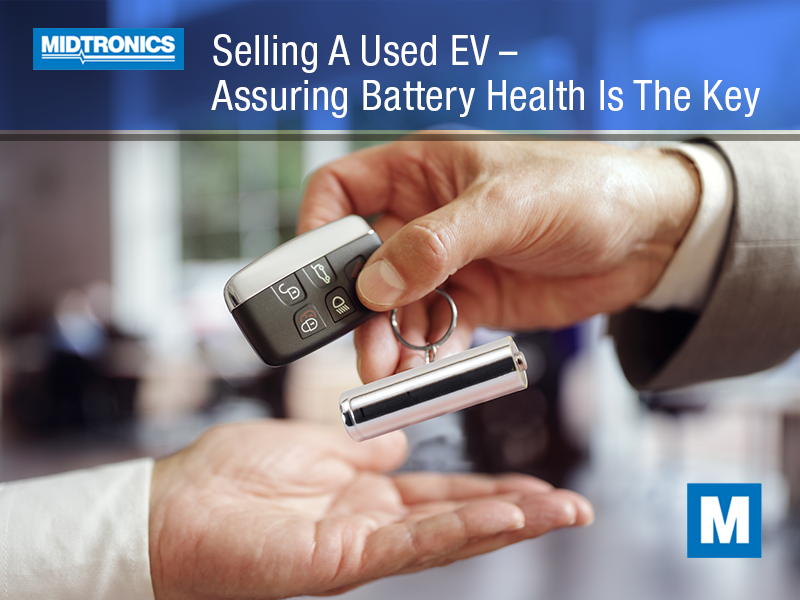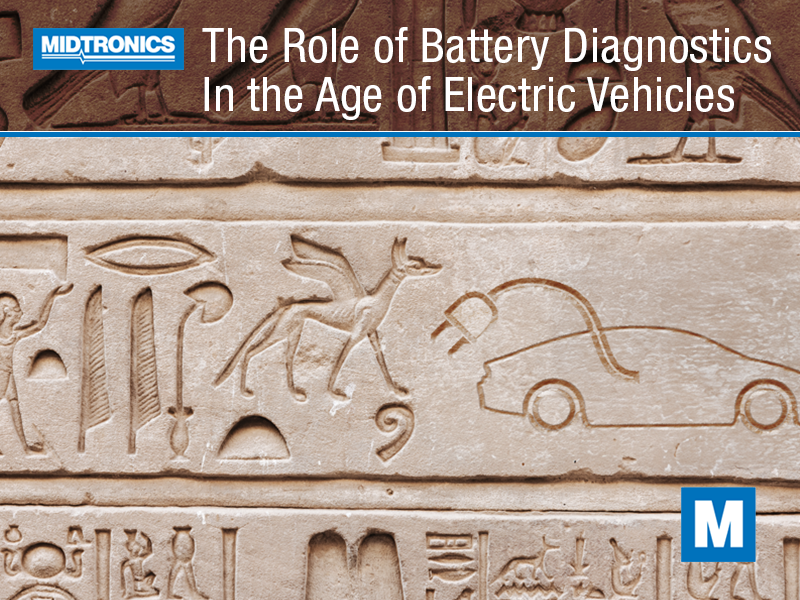With the shift to electrification in full swing, early adopters have now been in many of the mainstream EVs for up to a decade. And as the federally mandated eight-year warranty period comes to an end for some drivers, instances increase of battery issues.
Reduced range, battery imbalances, and decreased capacity are creating the need for replacements. Although in very limited numbers, some shops are beginning to stock common EV batteries for replacement due to these issues, and that says nothing of the batteries required to repair vehicles on insurance claims.
As instances of batteries in inventory rises, or if a facility is planning to carry one or two of the most popular options, it begs the question: what’s required for handling and maintaining EV batteries? We’ll go through the best practices that repair shops and parts departments should implement for storage and maintenance.
Start with Safety Training
The amount of energy that each EV battery contains is beyond what most people comprehend. Highly reactive materials within each cell can be devastating if the energy gets released accidentally, and if once cell is damaged, the chain reaction can be catastrophic. For those who’ve seen stories of EV fires that burn extremely hot and are virtually impossible to extinguish, it’s this level of energy release that you’re trying to avoid happening in your facility.
Everyone who works with and around EV batteries should be aware of the safety policies related to them. Of course, the primary risk is damage to the cells or assembly from puncture or crushing, but there’s more to it than that. Avoiding corrosion by keeping moisture away from the batteries, including food or drink. An evacuation plan should be posted and reviewed by staff in the event of an issue. And everyone should be trained in how to use the appropriate fire extinguishers for Li-ion fires, which are either standard ABS extinguishers or a dry chemical fire extinguisher. Any new hires should receive the same training too.
Safe Transportation
Did you know that, on average, EV battery packs are around 1,000 pounds? Some of the largest packs can range up to 4,000 pounds, making them a monumental task to move around the shop when you need to. That movement can involve coming off of the truck to be brought into the parts department for storage, from parts to the service bay, as well as taking the old battery from the vehicle and removing it from the shop for return or disposal.
At no point should EV batteries be moved by physical manpower alone as the risk for dropping it is far too great. Instead, carts designed specifically to transport loads of that size should be used. Some tool manufacturers offer carts with manual hydraulic lift capabilities – much like using a pallet jack – with a table top that the battery rests on. Others are powered, making the task even simpler and safer. This type of equipment to move around these massive battery packs should be considered mandatory.
Designated Areas to Store EV Batteries
The demand for EV batteries isn’t high as yet, and turning over a popular battery pack might still take months or even longer. That might be a problem for normal 12-volt lead-acid batteries to sit on the shelf, but for properly maintained Li-ion battery packs, it’s no big deal at all if they’re stored properly. Temperature and humidity are both factors for storage, even though they aren’t as critical when the battery is installed in a vehicle, and safety and security are just as important.
An ambient temperature below 70 degrees F is ideal for Li-ion battery packs, and humidity should be kept at or below 50 percent. Preventing condensation from building up between the terminals is the goal, along with keeping temperature fluctuations from affecting the kinetic energy inside the batteries.
Also, protecting batteries from impact is crucial. First, stacking these heavy components should be avoided as a simple slip could have serious results. And perhaps even more importantly, there should be a barrier to prevent carts and other items from accidentally running into them.
Storing Old EV Batteries
Batteries that have been removed from vehicles and need to be returned for warranty or sent for recycling also have storage requirements, especially when they’re damaged. Where batteries that aren’t holding a proper charge can spend their short time alongside new batteries, those with physical damage should not. These should be removed from your facility as quickly as possible, and if they need to be kept on-site for any length of time, they should be stored on their own, far from combustible materials and other batteries.
Test and Charge Stored Battery Packs
While the time ticks by, waiting to sell and install an EV battery pack, it needs to be kept in great shape. If a battery is stored with a full charge, it’s much more volatile and poses an unnecessary risk, and it also can contribute to lithium dendrites that can damage and short-circuit cells inside.
The ideal state of charge to store Li-Ion battery packs is between 40 and 50 percent – a zone where the battery is safest and doesn’t risk deterioration from being stored fully discharged. Throughout the time your facility has the battery in stock, test it monthly and apply a slow charge until it’s in this range.
For old battery packs, use equipment that can safely discharge the battery. Midtronics’ GRX-5100 EV/HEV Battery Service Tool is an excellent solution for this type of process.
While the world of electrification is charging up, repair shops and parts departments have extra work to do in preparing for the transition. Keeping the product safe throughout its time in your facility is key, and following these best practices for handling and maintaining EV batteries will help ensure everyone’s health and satisfaction with the process.




